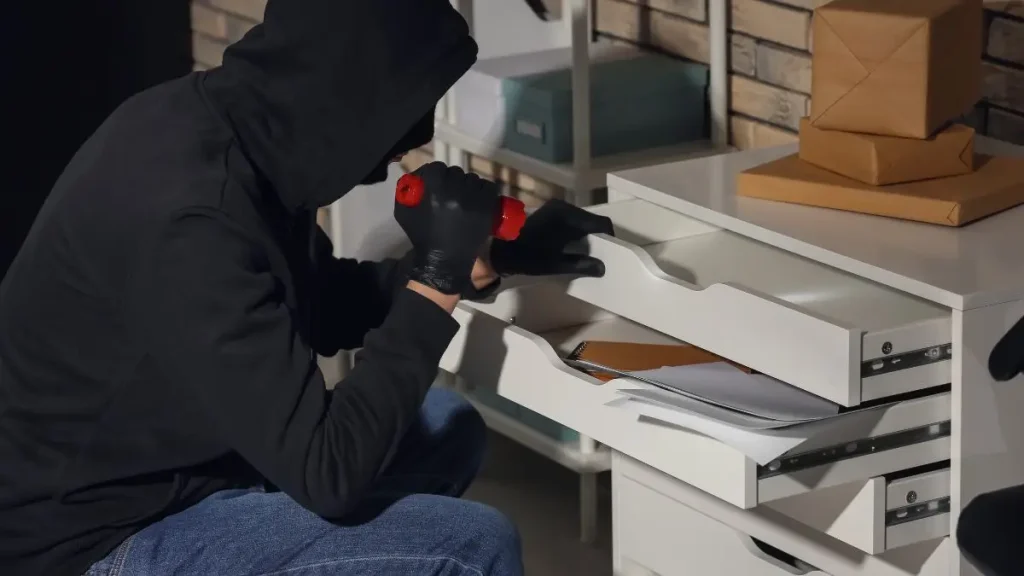Suspects in Washington Sentenced After Violent Home Attack and Kidnapping
There’s something especially disturbing about crimes that happen inside someone’s home. It’s where we’re supposed to feel safest. But in January 2024, that sense of safety was shattered for one Washington, D.C. woman—kidnapped, beaten, and threatened with death, all inside her own apartment.
Now, nearly a year and a half later, the men behind that terrifying night—Andrew James and his accomplice Taurean Hobdy—have been sentenced in D.C. Superior Court. And while the justice system has spoken, the case still raises serious questions about home invasion laws, sentencing decisions, and how we treat victims of such deeply personal violence.
As someone who’s covered dozens of criminal court cases, I can tell you this one stands out—not just for the brutality, but for what it reveals about how our legal system handles trauma inside the home.
So let’s break it down, clearly and honestly—no filler, no fluff.
What Really Happened Inside That Washington House on January 4, 2024?
Let me walk you through what the prosecution revealed—because once you read the details, you’ll understand why this case left such a mark.
It was just after midnight. A woman returned to her multi-unit townhome in Washington, D.C. She opened the door like it was any other night—but inside, two people were waiting.
One of them was Andrew James, armed with a handgun. The other was a woman who hasn’t been identified to this day.
James forced the victim into her own unit and ordered the woman to start assaulting her. For nearly two hours, she was held captive, threatened, and beaten. As per U.S. Justice Department, James wanted money—specifically, her EBT card PIN. At one horrifying moment, he even ran a bathtub full of water and told her he would drown her if she didn’t cooperate.
And she did. She gave him the PIN. James then sent co-defendant Taurean Hobdy to a corner store where he used her benefits card like it was his.
Meanwhile, the victim—terrified but brave—managed to send a secret text to her mother. That single act may have saved her life.
When police arrived, they found her hidden in a closet, covered in bruises, buried under a pile of clothes.
And if you’re wondering—yes, this happened while Andrew James was already out on release for pending charges.
That’s how bold he was.
The Charges: What Were They Actually Convicted Of?

Let’s break this down simply—because legal jargon can sometimes hide just how serious a crime really is.
The jury found both Andrew James and Taurean Hobdy guilty of:
- Kidnapping
- First-degree burglary
- Robbery
- Felony threats
Now here’s where it gets worse. James was also convicted of committing this violent act while already out on release for a previous charge. That’s a separate offense in itself—and it shows this wasn’t some moment of desperation. It was calculated.
If you’re like me, you’re probably asking: “How can someone out on release do something this extreme and still get less than 10 years?” Don’t worry—we’ll talk about that in the next section.
But before we move on, it’s important to realize: these charges weren’t just words on paper. Each one carries serious weight under D.C. law. Kidnapping alone can land you in prison for decades.
These convictions weren’t just about punishment—they were about confirming that what happened wasn’t just a burglary. It was a homegrown horror show.
In Scott County, one home invasion ended in a fatal shooting that also raised major legal questions.
Why the Sentences Left So Many People Confused?
Okay, so here’s where things get complicated—and controversial.
When the U.S. Attorney’s Office stood before the judge, they didn’t hold back. They asked for:
- 13 years in prison for Andrew James
- 10 years for Taurean Hobdy
And honestly, that felt fair. After all, the victim was terrorized for hours, threatened with drowning, and robbed—inside her own home.
But here’s what actually happened:
- James was sentenced to 7 years in prison
- Hobdy got 5 years
Both men will be on supervised release for another 5 years afterward.
Now, you might be thinking: Why the gap?
I asked the same thing.
The court hasn’t publicly released a full explanation, but in many cases like this, judges take into account a mix of things:
- The defendant’s criminal history
- Any plea deals
- Cooperation with investigators
- And yes, sometimes perceived remorse
Still, the fact remains—the sentences were well below the prosecution’s request.
And if you’re feeling frustrated by that, you’re not alone. Many legal experts and citizens alike think this was an opportunity for the court to send a much stronger message.
What’s your take on this sentence? Do you think it was fair—or too lenient? Drop your thoughts in the comments below—we read every one.
What Makes This Washington House Invasion So Disturbing?
Look, house invasions are always terrifying. But this one? It hit differently.
Why? Because it wasn’t random. It was personal, calculated, and deeply invasive.
Think about it: this woman wasn’t attacked on the street. She was hunted in her home—a place where she had every right to feel safe. And to make things worse, her attacker wasn’t just some stranger. He waited for her. He brought backup. He used fear as a weapon for hours.
That bathtub threat? That’s the kind of psychological warfare we usually see in movies—not real life.
You and I both know: when something like this happens, it changes the way people feel about their neighborhoods, their homes, and even their routines.
And that’s what makes this more than just a criminal case. It’s a wake-up call.
We’ve also seen conversations around similar cases gain momentum on community-focused WhatsApp updates—where people are actively discussing justice, sentencing, and local safety concerns.
If you follow such updates, you’ll know how quickly public opinion shapes around cases like this.
What the Law Actually Says About Crimes Like This in D.C.?

If you’ve made it this far, it’s clear—you care about justice. So let’s look at how the law handles this kind of brutality.
In Washington, D.C., the crimes involved in this case come with serious maximum penalties:
- Kidnapping can carry up to 30 years
- First-degree burglary also brings up to 30 years if the resident is home during the break-in
- Robbery and felony threats can add another 15+ years combined
And when a person commits these crimes while out on release, that’s considered a major aggravating factor.
So if you’re wondering whether James could’ve gotten more time—the answer is yes. Legally, the judge had room to impose a harsher sentence. The government even argued for it.
But as we saw, the actual sentence was far less than the maximum allowed.
That’s the gap we need to talk about more—not just in this case, but in others like it.
Because if we’re going to take home invasions seriously, the consequences need to reflect just how deeply they damage lives.
A similar tragedy unfolded in Antioch, where a 26-year-old man on the edge of violence was fatally shot by police after threatening lives inside a house.
Could This Happen Again? What the Sentencing Means for Future Cases?
This part is uncomfortable, but necessary.
Here’s the truth: supervised release doesn’t guarantee someone won’t reoffend. It means they’ll be monitored—but only to a point. James will be free in 2032. Hobdy, in 2030.
So the real question is: will anything change between now and then?
That’s where policymakers come in. This case could reignite debate in D.C. about:
- Stricter sentencing for home invasions with violence
- Revisiting the sentencing grid when multiple serious charges overlap
- Protective monitoring during and after release
Let’s be clear—this article isn’t saying “lock them up forever.” It’s saying balance justice with safety. And that starts with asking tough questions about how the law is applied in cases like this.
In Pineville, a man on parole was recently arrested for a separate home invasion tied to arson—highlighting just how often these patterns repeat.
Final Thoughts
The Washington house invasion wasn’t just a criminal case—it was a chilling reminder of how fragile our sense of safety can be. While justice has been served to some extent, the deeper questions about sentencing fairness, victim trauma, and legal reform still remain.
If we want a safer, more just society, we need to keep asking those hard questions—loudly and often.
For more real-world crime cases and justice breakdowns like this one, check out our full coverage of U.S. home invasion on our website.
Disclaimer: This article is based on publicly available legal documents and official statements.
It does not constitute legal advice or opinion. For legal concerns or support, please consult a licensed attorney or local authority.
⭐ Subscribe to Our Newsletter
Subscribe to the publishers newsletter to receive the latest news and updates directly in your inbox


